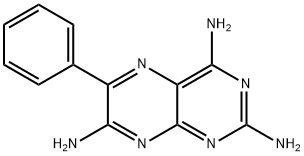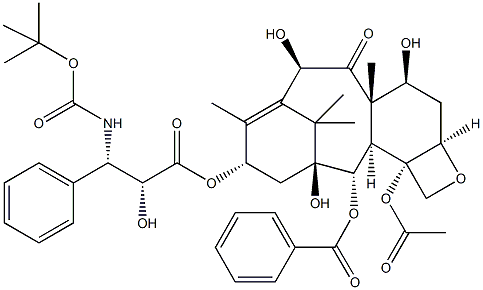F115021
2,4,7-Triamino-6-phenylpteridine , 98 , 396-01-0
Synonym(s):
2,4,7-Triamino-6-phenylpteridine;6-Phenyl-2,4,7-pteridinetriamine;Triamterene
CAS NO.:396-01-0
Empirical Formula: C12H11N7
Molecular Weight: 253.26
MDL number: MFCD00006708
EINECS: 206-904-3
| Pack Size | Price | Stock | Quantity |
| 5g | RMB865.60 | In Stock |
|
| 25g | RMB1791.20 | In Stock |
|
| 100g | RMB8430.40 | In Stock |
|
| others | Enquire |
Update time: 2022-07-08
PRODUCT Properties
| Melting point: | 316°C |
| Boiling point: | 386.46°C (rough estimate) |
| Density | 1.3215 (rough estimate) |
| refractive index | 1.8260 (estimate) |
| Flash point: | 11 °C |
| storage temp. | 2-8°C |
| solubility | formic acid: soluble200 mg + 4 mL warm Formic Acid, clear, yellow-green |
| pka | 6.2(at 25℃) |
| form | Solid |
| color | Pale Yellow to Yellow |
| Water Solubility | <0.1 G/100 ML AT 20 ºC |
| Merck | 14,9599 |
| BRN | 266723 |
| InChIKey | FNYLWPVRPXGIIP-UHFFFAOYSA-N |
| CAS DataBase Reference | 396-01-0(CAS DataBase Reference) |
| NIST Chemistry Reference | Triamterene(396-01-0) |
| IARC | 2B (Vol. 108) 2016 |
| EPA Substance Registry System | Triamterene (396-01-0) |
Description and Uses
Triamterene is an inhibitor of the epithelial sodium channel (ENaC; IC50 = 4.5 μM for the rat channel). In vivo, triamterene (0.5-32 mg/animal) enhances sodium secretion and decreases potassium secretion in adrenalectomized rats. Formulations containing triamterene have been used in the treatment of edema. This product is also available as an analytical reference standard .
This drug is recommended in combination with other diuretics for treating edema caused by usual reasons such as circulatory insufficiency, cirrhosis of the liver, and nephrotic syndrome.
Safety
| Symbol(GHS) |  GHS07 |
| Signal word | Warning |
| Hazard statements | H302-H315-H319-H335 |
| Precautionary statements | P261-P264-P270-P301+P312-P302+P352-P305+P351+P338 |
| Hazard Codes | Xn,T,F |
| Risk Statements | 22-36/37/38-36/38-23/25-39/23/24/25-23/24/25-11 |
| Safety Statements | 26-36/37/39-45-33-24-16-7-36/37 |
| RIDADR | 2811 |
| WGK Germany | 3 |
| RTECS | UO3470000 |
| HazardClass | 6.1(b) |
| PackingGroup | III |
| HS Code | 2933997500 |
| Hazardous Substances Data | 396-01-0(Hazardous Substances Data) |





